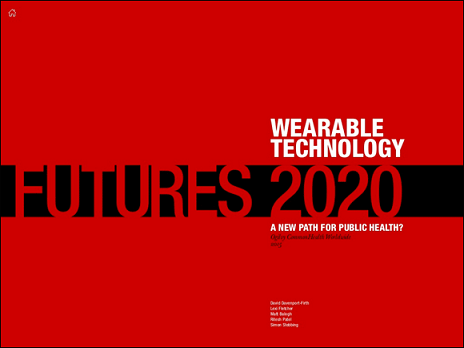 Ogilvy CommonHealth Worldwide, the health behavior change specialists of Ogilvy & Mather and a WPP company is leading the debate on the future of wearable technology by publishing a report today on its possibilities for improving public health.
Ogilvy CommonHealth Worldwide, the health behavior change specialists of Ogilvy & Mather and a WPP company is leading the debate on the future of wearable technology by publishing a report today on its possibilities for improving public health.
This report, Wearable Technology Futures 2020: A New Path for Public Health?, lends insight into some difficult but important questions currently challenging the health technology industry. For example, how can wearable technology better appeal to those who could most benefit from it—like the inactive or those fighting obesity—in addition to the health enthusiasts and technophiles currently embracing these wearable gadgets? Ogilvy health specialists brought their knowledge and expertise to bear on this question, as well as many others whose answers could help shape the future development of the technology.
Wearable Technology Futures 2020: A New Path for Public Health? is a three-part report: Part 1 analyses the approach developers are currently using and how this aligns with published thinking and evidence on behavior change techniques; Part 2 fuels the debate by suggesting, through six different scenarios, that the true potential of wearable technology can only be realized when we approach its application beyond the device and truly align around public health directives; and Part 3 takes an in-depth look at four popular devices and their associated apps as experienced by Ogilvy’s own user panel, clocking up a total of 23,040 hours.
David Davenport-Firth, EVP, Health Behavior Strategy & Intervention, led the team that produced the study and co-authored the report with Lexi Fletcher, Lead Planner.
“This report is intended to engage people in conversation around a vitally important topic: public health. One of our key findings was that the way people are motivated by wearable technology to improve their health is extremely personal. We must start thinking of wearable technology as a self-learning system in order to deliver increasingly personalized strategies: ‘one-size-fits-all’ thinking will fail us,” said Davenport-Firth.
“For those of us determined to make a real difference in public health, the potential to change behavior for the better, through wearable technology, is vast. But we must ensure that the development of these valuable devices is driven by a desire to change health behavior, rather than a desire to amass data for data’s sake,” he added. “We have a once-in-a-lifetime opportunity to seize the gift of wearable technology before it is seen as a gimmick. And we must act now. Our Ogilvy teams are operating under the premise that the best way to predict the future is to invent it, which is why our health specialists are bringing together behaviorists, choice architects, creative technologists and data visualizers throughout 2015 to debate these questions further. We invite those who are intrigued and passionate about wearables to seek us out so that we can collectively shape the future,” Mr. Davenport-Firth concluded.


